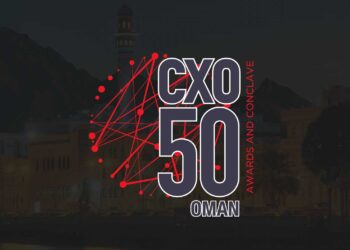What is AWS IoT Core, and how does it facilitate IoT device communication?
AWS IoT Core is a service that helps customers connect, manage, and scale their device fleets easily and reliably without provisioning or managing servers. Through AWS IoT Core, customers can connect billions of IoT devices, avoiding managing infrastructure costs, licensing fees, and other operational expenses. With native support for a managed MQTT broker (a standards-based messaging protocol, or set of rules, used for machine-to-machine communication) that supports persistent, always-on connections and advanced message retention policies and handles millions of devices and topics simultaneously, AWS IoT Core enables customers to scale their connected solution to process trillions of messages seamlessly. Some use cases include monitoring and managing industrial operations, building differentiated consumer-oriented smart home products, innovating with automotive data, and developing standards-compliant products.
How does AWS IoT Greengrass extend IoT capabilities to edge devices?
AWS IoT Greengrass is an Internet of Things (IoT) open-source edge runtime and cloud service that helps customers build, deploy, and manage software for edge devices. Customers use AWS IoT Greengrass for their IoT applications on millions of devices in homes, factories, vehicles, and businesses. Through this service, they can program their devices to act locally on the data they generate, run machine learning inferences locally on edge devices using models trained in the cloud, filter and aggregate device data, and only transmit necessary information to the cloud.
AWS IoT Greengrass lets customers quickly and easily build intelligent device software and offers prebuilt components to accelerate their application development process.
AWS IoT Greengrass also provides a secure way to seamlessly connect edge devices to any AWS service as well as to third-party services. Once software development is complete, AWS IoT Greengrass enables the users to remotely manage and operate software on their devices in the field without needing a firmware update. AWS IoT Greengrass helps keep the devices updated and makes them smarter over time.
What is the role of AWS IoT Device Defender in ensuring the security of IoT deployments?
AWS IoT Device Defender is a fully managed IoT security service that enables customers to secure their IoT configurations continuously. With AWS IoT Device Defender, customers get tools to monitor, identify, and respond to security issues. AWS IoT Device Defender audits security configuration across a customer’s fleet to ensure it adheres to security best practices, continuously monitors for any abnormal device behavior, generates alerts on security issues as they arise, and provides built-in mitigation actions for these security issues.
The service also identifies opportunities to use AWS IoT security controls effectively. However, if security misconfigurations are not remediated, or new attack vectors are disclosed publicly before devices are patched, the security of connected devices may be compromised. AWS IoT Device Defender complements preventative security controls in AWS IoT by helping customers identify devices already compromised and initiating containment and corrective actions.
What is AWS IoT Events, and how does it enable real-time monitoring and automation?
For those customers, detecting when a critical event has occurred is hard and requires the creation of custom logic, which in turn requires the engagement of specialized system integrators. AWS IoT Events makes it possible to easily and cost-effectively detect events system-wide and respond with appropriate actions to drive results, such as optimizing manufacturing efficiency or improving production quality.
AWS IoT Events is an IoT service that helps companies continuously monitor their equipment and fleets of devices for failure or operational stage changes and trigger alerts to respond when such events occur.
AWS IoT Events makes it easy to detect and respond to events that happen across multiple IoT devices, equipment subsystems, and applications. For most IoT customers, IoT deployments consist of multiple pieces of equipment with many independent sensors.
What are the different connectivity approaches supported by AWS IoT for device communication?
AWS IoT provides native support for multiple connectivity approaches, such as MQTT5, Amazon Sidewalk, WebRTC, LoRaWAN, enabling developers to quickly build standards-compliant smart home solutions. For example, Amazon Sidewalk, a popular shared-network service, integrates with AWS IoT Core to enable developers to easily provision, onboard, and monitor Amazon Sidewalk devices. Similarly, AWS IoT Core’s Message Broker supports devices and clients that use the MQTT, MQTT over WebSocket, and HTTPS industry standards to publish and subscribe to messages. While AWS IoT Core for LoRaWAN offers a fully managed LoRaWAN Network Server (LNS) that enables customers to connect wireless devices that use the LoRaWAN protocol for low-power, long-range wide area network connectivity with the AWS Cloud.
There are many IoT applications that need video streaming capabilities, whether it is smart cameras for security systems or to detect defects through visual analysis. For such applications, Amazon Kinesis Video Streams makes it easy for customers to securely stream media from connected devices to AWS for storage, analytics, machine learning (ML), playback, and other processing. Kinesis Video Streams supports WebRTC standard, an open-source project that enables real-time media streaming and interaction between web browsers, mobile applications, and connected devices via simple APIs.
With AWS IoT, developers can support various connectivity paths in their design, achieve greater flexibility, and bring unified solutions that are user-friendly and compatible across a diverse set of smart devices.










Discussion about this post